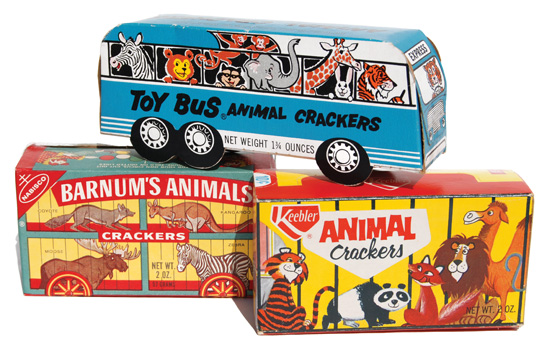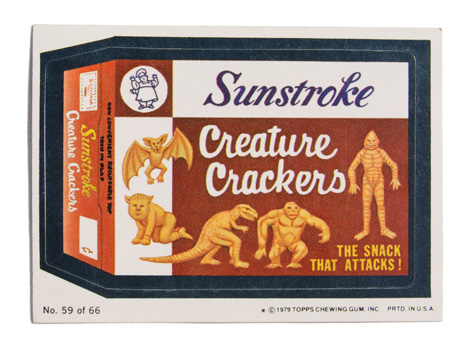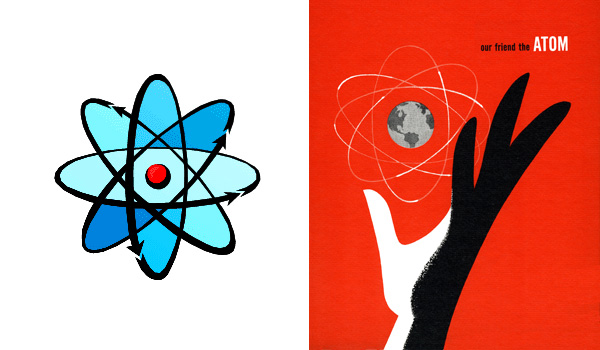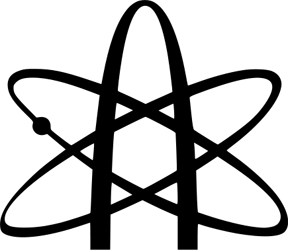Although I haven’t eaten one in a while, as a kid Animal Crackers, were my second favorite cookie after Vanilla Wafers––but then again, you can’t really bite the heads off Nilla Wafers.
Although considered a quintessential American cookie, animal crackers were an English invention and of course were called biscuits, not crackers. There were several bakeries producing the cookies at the turn of the 20th century in America, and the National Biscuit Company (now Nabisco) was one of them. To distance themselves from the other bakeries, NBC decided to evoke the “circus theme” of the Barnum and Bailey Circus—The Greatest Show on Earth—and their confections became the classic Barnum’s Animals we know today. First sold in bulk in stores from the proverbial cracker barrel, the cookies soon found their way into large tins and finally into the little cardboard boxes we all love. When the diminutive box was designed to hang from a tree as a Christmas ornament a string was added and never left the package design. Manufacturing innovations such as rotary dyes allowed the the bakeries to engrave the animal details more intricately; a great technologic advance if you are an Animal Cracker ear or foot nibbler.
Some of my favorite Animal Cracker boxes (and Animal Cracker miniature buses) can be seen above. Some are even more entertaining than the Nabisco classic. Later this year, I will write about canine crackers—aka, dog biscuits and dog bones—and how they were derived from the dry, vitamin-fortified, “sea biscuits” that sailors would take on long ocean journeys. But that’s another story and another collection.
Below is a 1974 Topp’s Wacky Pack trading card called “Creature Crackers—the snack that attacks.” One would think that with today’s fascination with zombies, dinosaurs and Twilight-like vampires this “imaginary brand” and spoof of a confection would be a best seller. I’m sure somewhere—and in some form—it already exists.



